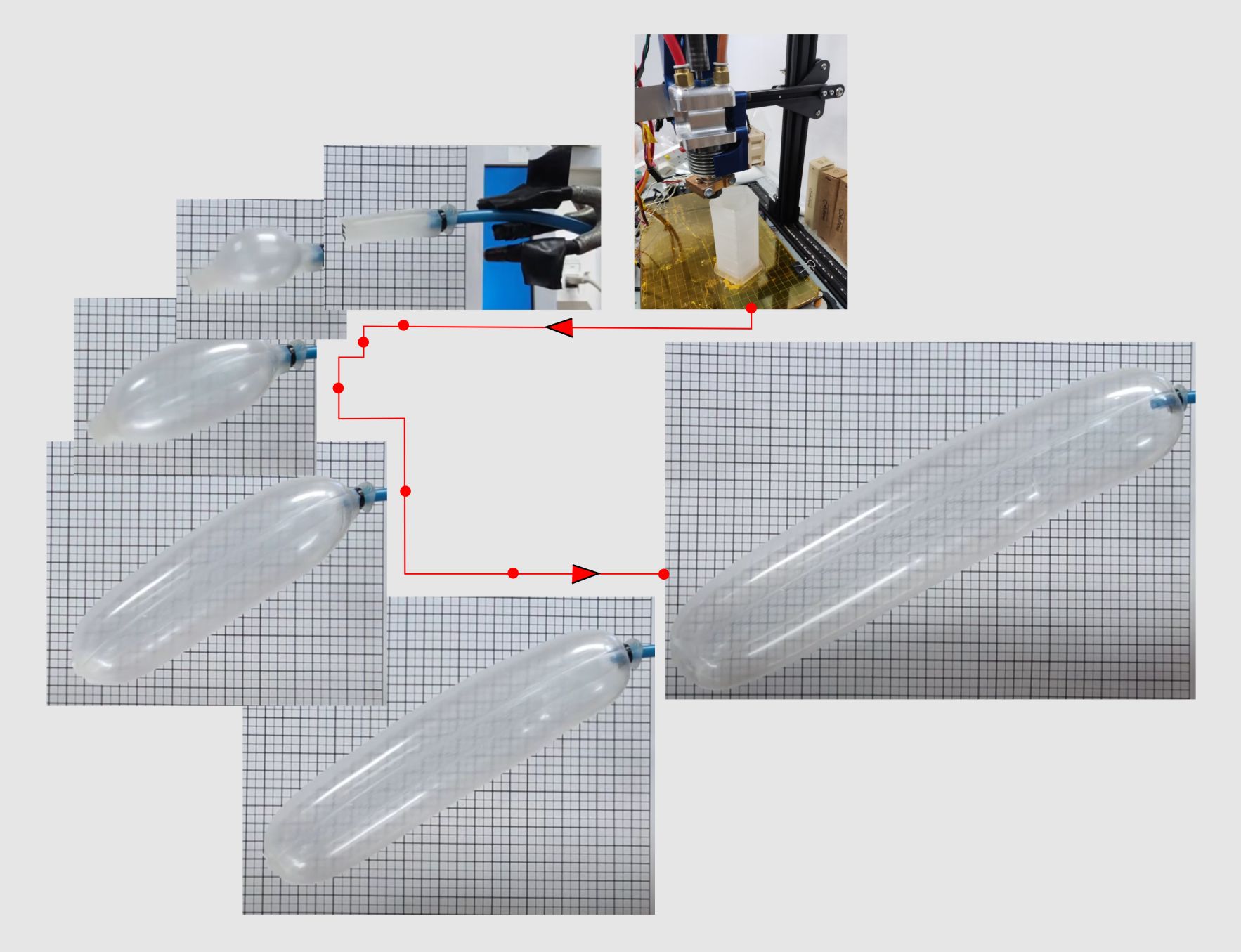With the rise in popularity of 3D printing, the medium has become more accessible. What’s more, recent advancements in the field have made the technology rather intriguing. THINK explores the latest UM research on the development of 3D-printed balloons.
Although 3D printing dates back to 1984, when American entrepreneur Chuck Hull first patented the technology, in recent years it is becoming more and more common for 3D printed material to find its way into our lives. As the medium evolved, 3D printers became smaller and cheaper, and today, many individuals use the technology to unleash their creativity. Still, until now, you might imagine the uses of 3D printing in manufacturing, design, and construction, but not really in balloons. Printing should result in a static end-product, right? So… balloons? Fear not, the mystery behind 3D printing these flexible, expandable materials is a thing of the past. The enigma has been decoded; the stakes at balloon fights will shortly be raised to a whole new level of competition. Who knows, maybe we’ll have balloon fights at the Olympics next!
Innovative 3D Printing Tech
Having completed his undergraduate studies in mechanical engineering, Research Support Officer and Ph.D. student Albert Curmi embarked on a journey to deepen his expertise in 3D printing technology. What drew Curmi to 3D printing is its novelty and vast potential for future applications. His contributions to the field focus on enhancing 3D printing material selection, allowing for the use of various polymers in the printing process. Polymers, known for their versatility, are used in everything from everyday products like plastic bottles and clothing to cutting-edge applications in medicine and engineering. Passionate about all things 3D printing, Curmi is dedicated to broadening the scope of materials available for 3D printing, unlocking new possibilities across industries.
Curmi with the support of Prof. Arif Rochman from UM’s Department of Industrial and Manufacturing Engineering and other team members developed an innovative 3D printer which formed part of the MALTI3D project. The MALTI3D project spanned three and a half years and was funded by the Malta Council for Science and Technology (MCST) through the FUSION: R&I Technology Development Programme (R&I-2018-009T). For this project, the team managed to show the capability of the developed 3D printer to print using various materials from standard to high-performance polymers (plastics). In the new and on-going research project called REO3D, Curmi has been improving the capabilities of the same 3D printer by integrating a novel control system to be able to print also exotic materials such as super-soft elastomers. This year-and-a-half project is coordinated by Prof. Arif Rochman and funded by the MCST through Fusion R&I Research Excellence Programme (REP-2023-025).
Printing Flexible, Inflatable Plastic
Curmi and Rochman’s research focuses on advancing screw extrusion and direct pellet 3D printing at the desktop scale, i.e. small-scale devices that may be used by a wide audience. Screw extrusion is a process by which materials, typically plastics, are forced through a nozzle using a rotating screw to form complex shapes and structures. The screw, housed within a barrel, melts, mixes, and pushes the material forward. The material is heated through friction and external heaters, becoming pliable enough to be shaped by the nozzle at the end of the barrel. The researchers have been working to improve this method, believing it could lead to the printability of what Curmi describes as ‘literally the softest materials ever printed’. This would be especially beneficial for use in direct pellet 3D printing as granulated materials are often more cost-effective and versatile than traditional filament-based 3D printing. It goes without saying that advancing the research in these areas, will result in better opportunities for the creatives on the user end.

Turning to the topic that has intrigued us all – 3D printing balloons – the process itself is quite fascinating. It involves creating balloon-like shapes out of elastic materials that can be inflated after being printed. It starts with stacking layers of material, but unlike traditional 3D printing, the layers stick together resulting in dense parts. Thus, in the next step, air can be injected into specific sections, causing those parts to puff up and form the 3D shape. If the object includes electronic components, these are printed flat on the top layer before the air is added to create the final 3D structure.
In the context of balloon printing, screw extrusion can be used to create intricate designs and patterns on the surface of balloons. This could involve printing patterns and designs directly onto the balloon material once the printing is done or creating moulds that can be used to shape the balloons during manufacturing.
From Bouncy Castles to Submarines
The system used for printing elastic materials can also 3D print high-performance polymers. They are a class of materials known for their exceptional strength, durability, and resistance to extreme conditions. They are designed to meet higher requirements than standard engineering plastics, making them suitable for demanding applications. These polymers are often used in aerospace, automotive, electronics, and medical devices due to their ability to withstand high temperatures, chemical exposure, and mechanical stress.
The potential applications extend far beyond the researchers’ initial case study. These include custom inflatables for various uses, such as pool floats, bouncy houses, advertising inflatables, and large inflatable characters. The technology could also be suitable for creating specialised balloons for scientific purposes, such as carrying instruments into the upper atmosphere for research. Another promising area is 3D printing swim bladders for submarines. This functions much like the balloon that most fish naturally have to control their “altitude” in the sea. Additionally, inflated materials could be used for bumpers or silicone socks, where 3D printing could revolutionise design and production. The goal is to refine the technology and transition it from a lab-based process to something commercially viable.
The researchers’ ultimate goal, as outlined by the REO3D project, is to enhance the quality and versatility of 3D printing. They aim to improve printing precision and expand the range of materials that can be used – especially those that are challenging to print with standard printers that lack inline control during the process.
This study is part of a project which is funded by the Fusion R&I Research Excellence Programme of the Malta Council for Science and Technology (MCST) (REP-2023-025) and is led by the University of Malta Department of Industrial and Manufacturing Engineering.
Further Reading
Curmi, A., & Rochman, A. (2024). Fused granulate fabrication of injection molding inserts from high-performance ULTEM 9085™ thermoplastic for cosmetic packaging industry. Progress in Additive Manufacturing. https://doi.org/10.1007/s40964-024-00630-z
Curmi, A., Rochman, A., & Buhagiar, J. (2024). Influence of polyether ether ketone (PEEK) viscosity on interlayer shear strength in screw extrusion additive manufacturing. Additive Manufacturing, 104086. https://doi.org/10.1016/j.addma.2024.104086
Curmi, A., Rochman, A. & Gatt, A. (2024). Screw extrusion additive manufacturing of thermoplastic polyolefin elastomer. Progress in Additive Manufacturing. https://doi.org/10.1007/s40964-024-00696-9





Comments are closed for this article!